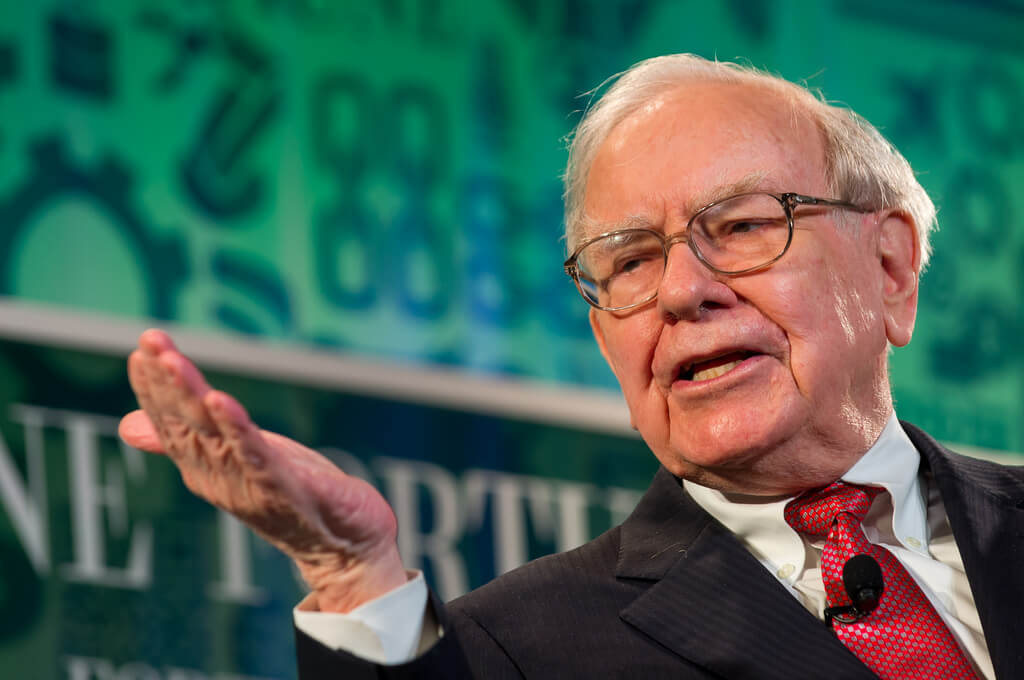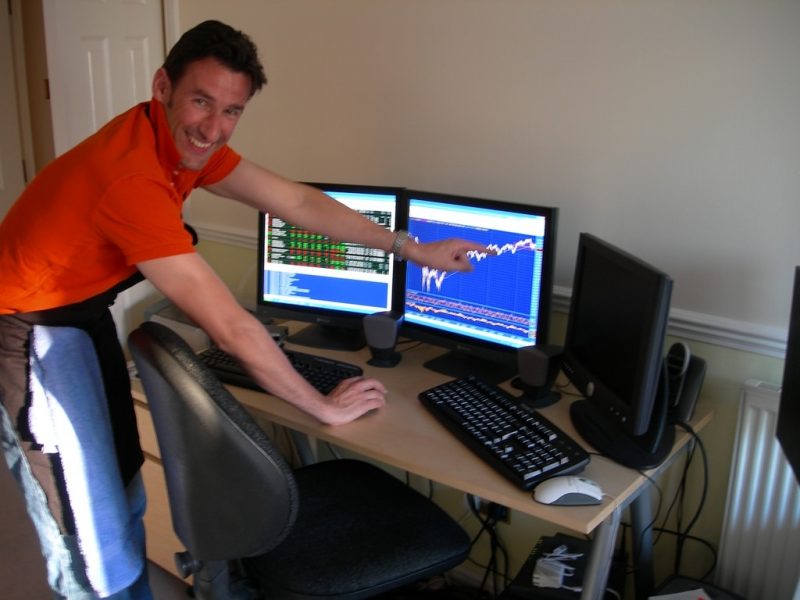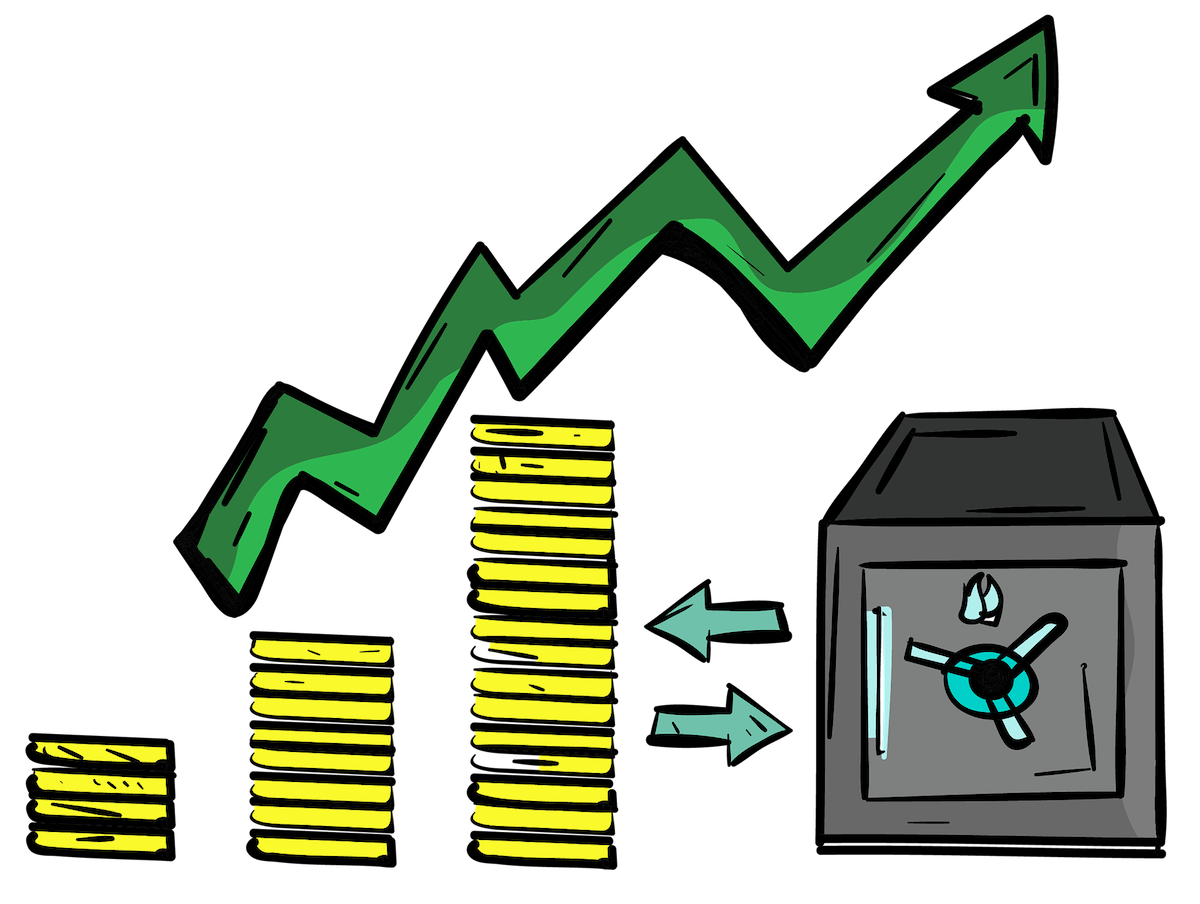Why do you invest? Why do you trade? Why do you spend your nights and weekend studying how to make a few bucks in the market? Because you want to make money! By applying some time, money, and knowledge you can be better off financially, right? Heck, who doesn’t want that? Maybe not my friend Eddie—I think he’s a monk or something :).
Maybe I can become the next Warren Buffett
Ok, you’ve got the time...check. You’ve got some extra cheddar in the bank...check. What you need is some knowledge. Specifically, where to start? I think most of us start by reading everything we can about Warren Buffett. He made a few pennies by applying our recipe of time, money, and knowledge.

But after diving into Warren’s investment strategy, you quickly realize it’s not for you. We want riches today—not when we’re 80. We want a quick buck! Next stop, Day Trading! We all have visions of facing a wall of monitors while we sit at a desk pressing buttons, making thousands of dollars day after day. So you start day trading...
Day trading here I come
People all over the internet claim to make riches day trading. You want to be like them. Heck, some of them sell you books and courses. Maybe you also buy a few new computer monitors. Now you're ready to day trade. On your first day you nearly double your money. You're crushing it! Maybe you crush it for an entire year. Maybe even a few years. Warren Buffett is a chump compared to you!

And then the day comes. You thought you were too smart for this to happen to you. You really thought this day would never come. But it did. You blew up your account. No more trading capital. The arm candy you had been dating just took off. No money, no love :). Rock bottom. Well, maybe not true rock bottom. Let's hope you only day traded with a small portion of your savings.
You have seen how you can get rich trading the market. It’s in your crawl. But how can you do things differently so that you always crush it and never blow up your account? You scour the internet looking for the holy grail of trading. And then it happens—you discover options trading!
Options trading is my new arm candy
When I say options trading I don’t mean directional options trading. Directional options trading is nothing more than using options as a way to leverage your day trades. Buying stock in Apple and hoping it goes up by the end of the day is the same thing as buying options in Apple and hoping it goes up by the end of the day. With directional options trading you can use far less capital to make the same return, but at the end of the day it’s the same form of gambling.

Options trading is, for me, probability-based options trading. Using probability and statistics to determine the expected move of a particular underlying asset (aka stock).
Before we get too deep, let's set the stage. This type of trading doesn’t involve 12 monitors mounted on your wall. It doesn’t require you to sit in front of your computer every day for hours on end. It’s a nice hybrid between Warren Buffett’s buy and hold approach and adrenaline-filled day trading. Sounds pretty good to me—more free time and more money!
How the most successful options traders trade
As I said, some of the best options traders use probability and statistics to form a trading strategy. They don’t place directional trades, trying to gamble on if a stock will go up or down. Most options traders place trades where they don’t care if the stock goes up or down. Though they might care if the stock moves up or down in a big way in a short period of time—more on that later.
Most successful options traders use volatility and options greeks to determine the likelihood of a particular underlying asset performing in a particular way. Then, instead of jumping on the directional bandwagon this type of options trader places trades that profit from the expectation of the move.
Before going into the nuts and bolts of this type of trading, let’s explore an analogy—take insurance companies, for example. Typically you pay your car insurance company a monthly sum in exchange for coverage should something bad happen. Of course, insurance companies are in business to make a profit. They need to collect more in total monthly payments than the total they have to pay out. They are banking on the fact that they can predict the percentage of their customers who will get into an accident—and the percentage who will not.
Say you send your car insurance company a $100 check for a month of coverage. If you make it the entire month without any accidents the insurance company wins. The insurance company knows, based on models of past performance, that most of the time they will win and every so often they will lose. They price the insurance they offer to account for this calculation. As an options trader you can mimic this type of transaction. You can become your own little insurance company.
Use fear to sell premium in the options market
Say you're a big hedge fund with billions under management and you’re unsure where the market is going. You can’t simply sell all your stock and go to all cash (too much to sell—the selling would move the market). One option (no pun intended; maybe) would be to buy some insurance in the form of put options.
In accordance with the concept of supply and demand, the cost of buying put options will increase as big hedge funds start buying them to protect their portfolios. The more managers reach for protection, the more the put options will cost.
No one knows the future—if anyone did they would be even richer than Mr. Buffet. So the insurance buying from big hedge funds is often precautionary and overdone. From the price managers are paying for these put options, in addition to some other factors, we can gauge what investors are expecting the market to move. This measure is often referred to as volatility. The VIX, aka the fear index, is a measure of the volatility of the stock market as a whole.
So what does this have to do with you? You’re just a small retail investor—for now at least. Well, you can take advantage of the big hedge funds’ eagerness to buy insurance. You can sell it to them. Just like the car insurance companies sell it to you.

As I mentioned, through supply and demand options pricing can get out of whack. Here is how you take advantage of that. Let's say options pricing is suggesting the market will move 5% in the next 30 days. You sort of know that’s out of whack. Implied volatility is way overdone. Why not sell puts based on this 5% implied move? You sell a put option contract and collect some premium just like an insurance company would.
How does this work? Let's say you sell (or write) a put options contract on the SPY (ETF that tracks the S&P 500). You write this contract 5% out of the money (the current price of the SPY). This options contact expires within the next 30 days. If the SPY closes down more than 5% in 30 days you lose money. In our analogy this is the equivalent of what happens when you crash your car and the insurance company pays to settle the claim. If instead the market stays above a 5% loss in 30 days, you keep the premium you collected when you sold the put option on the SPY.
Pretty simple right? In this example the SPY could go up in value, stay flat, or go down in value less than 5% and in each case you win.
To put some context to this idea let's look at my post How Often the SPY Falls More Than 5% in a 30-Day Period and Why You Should Care. In this missive I show that during any 30-day period from 1993 through 2014 the SPY closed down 5% or more 11% of the time. Using this historical information, if you sold a put 5% out of the money 11% of the time you would lose the trade—meaning the SPY closed down more than 5% in a 30-day window.
Just like car insurers have a model to estimate how many people will place claims in a year you can estimate how many times you will lose a particular put selling trade.
An options strategy that will gain you monthly income
It’s time to put all of this together. There are lots of strategies you can use to leverage the concepts I highlighted in this post. What I am about to share is how I like to trade put credit spreads on the SPY over and over again. I do not suggest blindly copying what I do. I suggest exploring different ideas and find the strategy that suits you best.
Earlier I talked about selling put options on the SPY and collecting a premium—most likely selling to those sucker hedge funds :). There is one downside to this approach. The losses can be pretty big. Think about it this way: if you get in a fender bender your auto insurance might have to shell out thousands in repairs. But if you total your car, your insurance company might be buying you a new car (maybe $40,000?). That’s a big range. Selling a naked put option can be the same way. The more the market tanks the more you pay out.
Did you know insurance companies buy something called reinsurance? Your insurance company has an insurance company of its own. Your insurance company buys insurance to cap its losses. So if you total your car and your insurance company buys you a new car, its insurance company might be paying half of that bill. So why not buy a form of reinsurance on your put option?

To insure a naked put position I often buy a put option (my own reinsurance) further out of the money. In the example above we sold a put option 5% out of the money. I might go and buy another put option 8% out of the money so I would only have to cover losses between 5% and 8% out of the money. If the SPY dropped 12% I would pay the first 8% and the put option I purchased would pay the remaining 4%. This trade is called a put credit spread.
By placing a put credit spread I am limiting my maximum loss, but I am also limiting my profit. I have to take out of my profits the cost of the put option I purchased.
By placing these put credit spread trades over and over again I generate monthly income that’s similar to day trading profits. The difference is I’m not gambling the way I would have to with day trading. I predict that 11% of the time I will lose and 89% of the time I will win. I limit my losses by buying protective puts.
My rule of thumb is this: whenever there is a put credit spread on the SPY that expires within 45 days and gives me a credit of $20 per lot or more, I place that trade. Often this strategy works out to 2 trades a week. In a good year this strategy returns 90+%, and over time this strategy returns 20 to 30% CAGR (that is CAGR, not pure return). I have never seen a day trading strategy that does this well year after year. Though yes, day trading might beat this strategy for a few years.
Conclusion
I had one very simple goal in this post: convince you that there are better alternatives to day trading. Most people do not succeed at day trading long term. You can get wrapped up in the idea of big percentage gains month after month. But take a moment to do one simple exercise. Put all the gains you think you will make month after month day trading into a spreadsheet. My guess is you’ll be a billionaire within a few years, right? Now look at the Forbes richest people list. Did any of them get rich day trading? Nope. If it was easy someone would have figured it out by now.
This type of options trading only became possible for the retail investor in the last 5 to 10 years. It’s pretty new, which is why you haven’t heard much about it. I am not saying probability-based options trading will make you a billionaire. What I am saying is the odds of long-term success are much more in your favor.
I will add that there is a time and place for day trading. Heck, I’ve even blogged about it. Day trading should be for a very small amount of your capital and mainly used to stay engaged in the market and have a little fun. I don’t think day trading should be the bulk of your trading strategy.
Related Topics: Monthly Income


